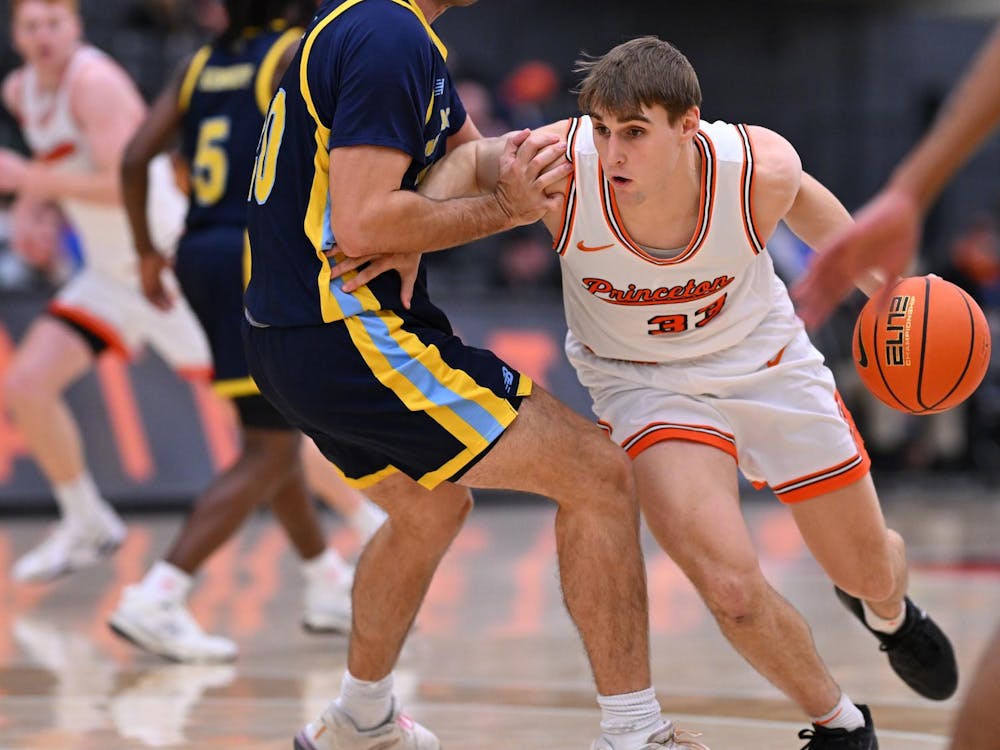In a league in which more than one quarterback accumulates 3000 yards a season while the running back plays second fiddle, giving a great deal of credit to the running game may appear slightly odd.
But it was from this position that Princeton was able to dominate Saturday's game against Columbia, piling up massive yardage on the ground, thereby freeing up the passing attack to make the big plays.
Due to junior running back Cameron Atkinson's ability to find the openings and hit them, as well as the offensive line's improvement from the Lehigh game to Columbia, the Tigers were able to control the ball and continue the drives that put 44 points on the board.
Last week's game against the Mountain Hawks was not kind to the Princeton offense. The Lehigh defensive line and linebackers were able to control the Tiger offensive line, close the holes, and leave the Princeton rushers with a total of only 62 yards on 31 carries. Furthermore, as the running game struggled, Lehigh was able to switch focus to Princeton's passing game, limiting sophomore quarterback David Splithoff to just seven yards per completion.
To make matters worse for an already dismal game, Atkinson also received a shoulder injury at the end of the first half, raising doubts about his ability to return on Saturday against Columbia.
If Atkinson had not returned, and if the Tiger offensive line was overpowered by the Columbia defensive line, the Tigers would have been in a dire situation.
But the second half against Lehigh was all that Atkinson missed, and he was back Saturday against the Lions in full stride, gaining 115 yards on 18 carries in just three quarters of play.
"It's nice to come back after the stinger (shoulder injury)," Atkinson said. "I really wanted to produce [against Lehigh], but I got an injury, which kept me out of last week's game, but I'm happy after tonight."

Maybe the main reason for Atkinson's happiness is the offensive line. Few people expected as much as they should have out of the group, which graduated all but one starter from last season and was overpowered against Lehigh.
But play after play against Columbia, the offensive line pushed back the defense, providing Atkinson the openings and the quarterback time to make a pass.
"[Quarterback David Splithoff] didn't have the pressure on him that he did before," football head coach Roger Hughes said. "We were able to run Cameron, and I thought we really did a good job at knocking [Columbia] off the ball."
With stronger inside blocking, Atkinson was able to hit the middle more often than usual, and he gained yardage on all but one play in the game.

"With their blocking, I could pick and choose where to go," Atkinson said. "My job was easy."
While Atkinson was being modest in saying his job was easy, it was certainly easier than the week before. Perhaps the best example of the inside blocking and Atkinson's ability to find the hole was on one running play that set up Princeton's second touchdown late in the second quarter.
The play was designed for Atkinson to run outside to the right, but when Columbia overloaded the right side, Atkinson shook a tackle and came back to the middle to seek the protection of the linemen. Luckily for him, the offensive line did not stop blocking after Atkinson went outside but instead opened up holes for him to run through so that he could turn a potential loss into what eventually became a six-yard gain.
In addition to the line's improvement, credit should go to the variety of plays chosen by the Princeton offense, starting the game with fine execution of the option and ending the game with more standard formations.
For example, in Princeton's second drive of the game — in which it went 78 yards on just 10 plays — the Tiger offense gained 65 yards on the option with either Splithoff taking the ball himself or tossing it off to Atkinson for the gain.
With that and similar carries, the Tiger passing game was able to open the flood gates and create a number of big plays, including a long of 78 yards between Splithoff and junior wide receiver Chisom Opara, the longest in the stadium's history.
Although Columbia's defense was weaker than most, the Tigers demonstrated how they need to run their offense against the stronger Ivy League foes.







